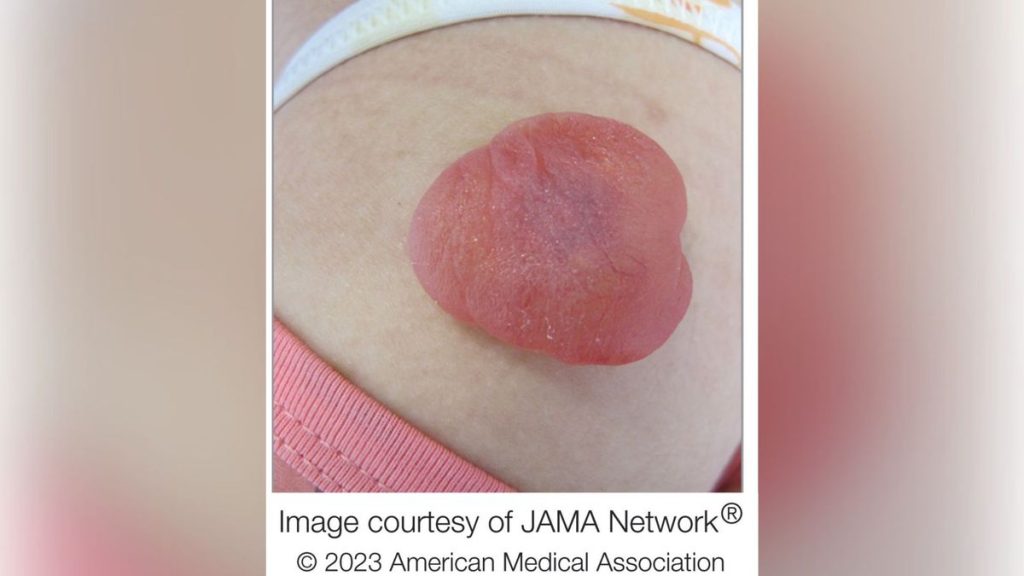A bulbous mass that spontaneously appeared on a girl’s shoulder looked like a huge piece of red gummy candy that oozed a jellylike substance when punctured.
The mass turned out to be a rare type of pilomatricoma (also spelled pilomatrixoma), a benign tumor that develops in hair follicles. These tumors typically grow on the head or neck, and their underlying cause is not well understood. The type of tumor that appeared on the girl’s shoulder is known as a “bullous pilomatricoma,” where “bullous” refers to the growth’s blister-like appearance.
In a new case report, published Wednesday (Aug. 9) in the journal JAMA Dermatology, doctors described the 16-year-old girl’s case, noting that the red lump on her right shoulder started to form “without obvious triggers,” such as physical trauma or an insect bite.
The tumor grew over the course of six months, swelling to cover an area of about 5.5 square inches (36 square centimeters), about three-fifths the size of a playing card. At its tallest point, it extended more than an inch (3 cm) off the skin’s surface. A firm-to-hard nodule could be felt inside the tumor.
Related: Woman’s ‘extra breast’ under her armpit developed a wart-like tumor in unusual case
Apart from the growth, the teen’s physical examination and lab results were normal. Her doctors treated the tumor by surgically removing it under local anesthesia. The cut side of the tumor appeared chalky white, and the middle layer of the skin contained a buildup of immune cells called basophils and “shadow cells,” dead cells that lose their nuclei but retain their outer membranes. The accumulation of these cells is a hallmark of pilomatricoma.
Although the exact cause of bullous pilomatricoma is unknown, the study authors noted, there are two leading theories as to why these jelly-filled tumors have such a bulbous appearance.
One theory suggests that, when the tumor nodule appears, it blocks the movement of lymph — clear fluid that flows through vessels in the body, delivering immune cells and nutrients and removing debris — and thus, lymph builds up in the tissue around the nodule.
The second theory proposes that skin and immune cells near the tumor release enzymes that normally help shape the supportive scaffolding between the body’s cells. When secreted near the tumor, these enzymes may break down nearby connective tissue, causing the skin to poof up like a blister.
Following the removal of the tumor, “the patient is under regular outpatient follow-up, with no recurrence detected in 1 year of follow-up,” the doctors reported. In the event that a pilomatricoma isn’t fully removed during surgery, this “almost always results in recurrence,” they added.

